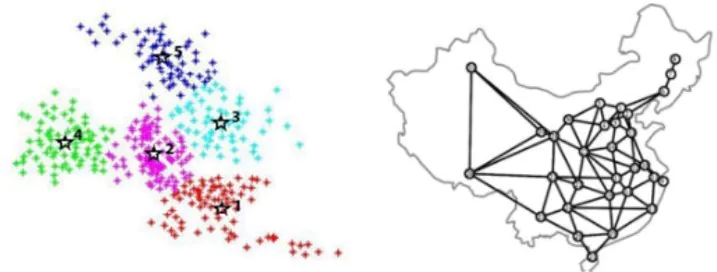Table of Contents
What You’ll Find in This Case Study:
- Big Data Analytics in the Transportation Industry
- Big Data Transportation Challenges Faced by the Client
- Quantzig’s Approach
- Big Data Transportation Analytics Assessment Benefits
- Clustering and Entropy-Based Models
- Big Data Transportation Analytics Predictive Insights
Big Data Analytics in the Transportation Industry
Urban traffic congestion is a major challenge and the leading cause of loss of productivity, higher risk to passenger safety, an increase in fuel consumption, and pollution. The best way to combat this problem is to improve performance measurements for seamless traffic flow, reduce congestion, and efficiently manage current roadway assets. Coordinated traffic signals and variable-messages are currently being used to reduce congestion. Big data analytics offers new and improved ways to predict congestion before it happens, using a combination of real-time information, historical trends, and new-age algorithms.
Sensors installed in trucks, ships, and airplanes give real-time insights about the driver’s capabilities and the traffic. The data extracted from these sensors can be utilized to identify bottlenecks as well as predict the state of the network. The data is extracted from millions of cellphones and GPS signals from commuters passing by and translated into car speeds, community events, etc.
Unlock business intelligence by creating a unified view of big data with the help of Quantzig’s cutting-edge big data analytics solutions. Speak with our analytics experts for more information now.
Quantzig’s big data analytics assessment identifies a set of transport indicators that could be measured using the mobile phone data available with travel agencies. We develop a network optimization solution to ensure optimized route planning. By estimating the transport models, the big data analytics experts would analyze the efficiency of the current transportation system, and predict future network scenarios to improve decision support.
How transportation analytics helped with the challenges faced by the client
A global mobile services operator headquartered in Europe wanted to analyze the transport demand and supply to optimize routes, reduce cost, and develop a network optimization solution to ensure optimized route planning. They wanted to estimate the transport models, analyze the efficiency of the current transportation system, and predict future network scenarios by leveraging the use of big data analytics.
In a bid to leverage big data transportation analytics, the mobile service operator decided to connect with Quantzig’s experts to get a free demo.
Our Approach
The big data analytics team assessed a plethora of data comprising mobile data, transportation networks, network constraints, transportation routes, service timings, population data, and cost data and created a flexible and multi-layered architecture to extract information from geotagged network data. The research team transformed the data received from each source to a uniform format for analysis purposes.
Big Data Transportation Analytics Assessment Benefits
- Implemented a modular platform to perform data analysis in an easy, scheduled, and controlled way using a user-friendly interface
- Developed a front-end using visualization tools to allow the business users to inspect the information that has been generated from the data
- Big data analytics-enabled quick verification of the results of the analysis with different input parameters
- Our big data analytics solutions provided an in-depth analysis of the total number of trips made to and from each zone based on time, day, month, and holiday
Clustering and Entropy-Based Models
To learn more about our big data analytics solution, request a free proposal today!
Big Data Transportation Analytics Predictive Insights
- Provided daily estimates of the travel demand for all travel nodes, which enabled better transport planning
- Travel flows estimated from aggregated movements enabled an in-depth understanding of how traffic demand is distributed in the transportation network and how it varies over time
- Identified different types of challenges within the transportation network to enable optimized route planning
- Identified parts of the network which has poor infrastructure and it not well adapted to the traffic demand
- Calculated travel delay metric to estimate travel delay due to congestion based on travel time distribution between peak and non-peak periods



